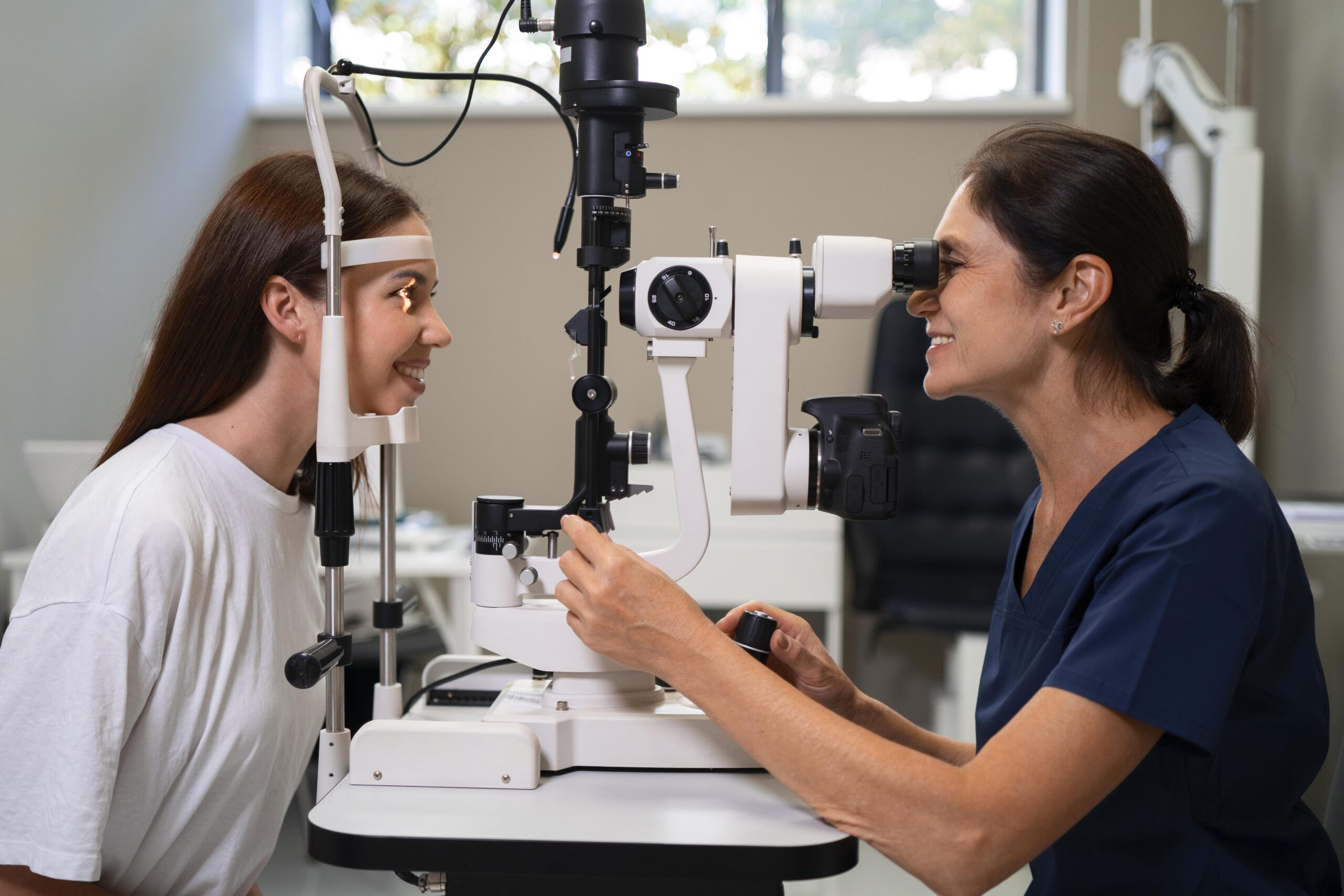
When it comes to achieving clear vision, modern advancements have provided us with a range of options. LASIK surgery and traditional glasses remain two of the most common solutions for correcting refractive errors like myopia, hyperopia, and astigmatism. Each method has its benefits and limitations, making the decision highly personal and dependent on various factors.
In this blog, we’ll compare LASIK and traditional glasses in terms of convenience, effectiveness, costs, and long-term benefits. By the end of this complete guide, you’ll have a clearer understanding of which option might be right for you. Additionally, we’ll share insights from experts at the best eye hospital in Kannur to help you make an informed choice.
1. An Overview of LASIK Surgery
LASIK, or Laser-Assisted In Situ Keratomileusis, is a popular surgical procedure designed to correct vision by reshaping the cornea. The process involves using a precise laser to address the refractive errors, allowing light to focus correctly on the retina. One of the primary advantages of LASIK is its long-term effectiveness. Most patients achieve 20/20 vision or better following the procedure. However, LASIK is not suitable for everyone, and consulting a Kannur eye specialist is essential to determine if you’re a good candidate.
2. The Tried-and-True Method: Traditional Glasses
Traditional glasses have been the go-to solution for vision correction for centuries. They are non-invasive, easy to use, and widely available in various styles and prescriptions. Glasses offer the added benefit of protecting your eyes from dust, debris, and harmful UV rays if equipped with the right coatings. Unlike LASIK, they are suitable for people of all ages and do not carry surgical risks. Experts at an eyecare hospital in Kannur often recommend glasses as a reliable option for individuals seeking simplicity and safety.
3. Convenience and Daily Use: LASIK vs. Glasses
When it comes to daily convenience, LASIK has a clear edge. After undergoing the procedure and completing the recovery process, most patients no longer need corrective lenses for their day to day activities. On the other hand, glasses can be cumbersome for some, particularly during physical activities, driving in the rain, or exercising. However, advancements in lightweight materials and stylish designs have made glasses more comfortable and appealing over the years.
4. Costs and Affordability
One significant factor influencing the decision between LASIK and glasses is cost. LASIK is often considered an investment, as the upfront expense can be high. However, the long-term savings on glasses, contact lenses, and related accessories often make LASIK cost-effective in the long run. Conversely, glasses have a lower initial cost, but the cumulative expenses of replacing lenses, frames, and accessories can add up over time.
5. Long Term Outcomes: Durability and Effectiveness
LASIK offers the advantage of a permanent solution for most vision issues. While some patients may experience slight regression over the years, the vast majority enjoy long-lasting results with minimal maintenance. In contrast, glasses are dependent on external factors. They can break, scratch, or become outdated as your prescription changes. Regular visits to an eye hospital in Kannur are necessary to ensure that your glasses continue to meet your vision needs.
6. Risks and Complications
No medical procedure is without risks, and LASIK is no exception. Although complications are rare, they may include dry eyes, glare, or halos around lights, especially during the initial recovery period. Glasses, on the other hand, pose virtually no risks to eye health but may cause discomfort, such as headaches or pressure on the nose and ears if not fitted properly. Consulting a Kannur eye specialist can help mitigate such issues through professional guidance and adjustments.
7. Aesthetic Appeal: Personal Preferences
For many, the aesthetic aspect plays a significant role in their decision. LASIK eliminates the need for glasses, providing a natural, lens-free look that appeals to individuals who prefer not to wear frames. However, glasses have evolved into a fashion statement, with countless designs available to suit various tastes and lifestyles. At an eyecare hospital in Kannur, specialists often highlight the importance of comfort and confidence in making a choice that fits your personal style.
8. Age and Lifestyle Considerations
Age and lifestyle are critical factors in determining the best vision correction method. LASIK is generally recommended for adults aged 18–40 with stable prescriptions, as younger individuals may still experience changes in their vision. For older adults or those with progressive eye conditions, glasses might be a safer and more adaptable solution.
9. Combining Both: A Balanced Approach
For some, the ideal solution may involve combining both options. LASIK can correct the primary vision issue, while glasses may still be needed for tasks like reading or driving at night. This approach ensures flexibility and caters to changing vision needs over time. Consulting an eye hospital in Kannur can provide insights into how these solutions can complement each other for optimal results.
Making the Right Choice
Choosing between LASIK and traditional glasses is a deeply personal decision that depends on factors like lifestyle, budget, and overall eye health. While LASIK offers the promise of freedom from lenses, glasses remain a reliable and non invasive option.